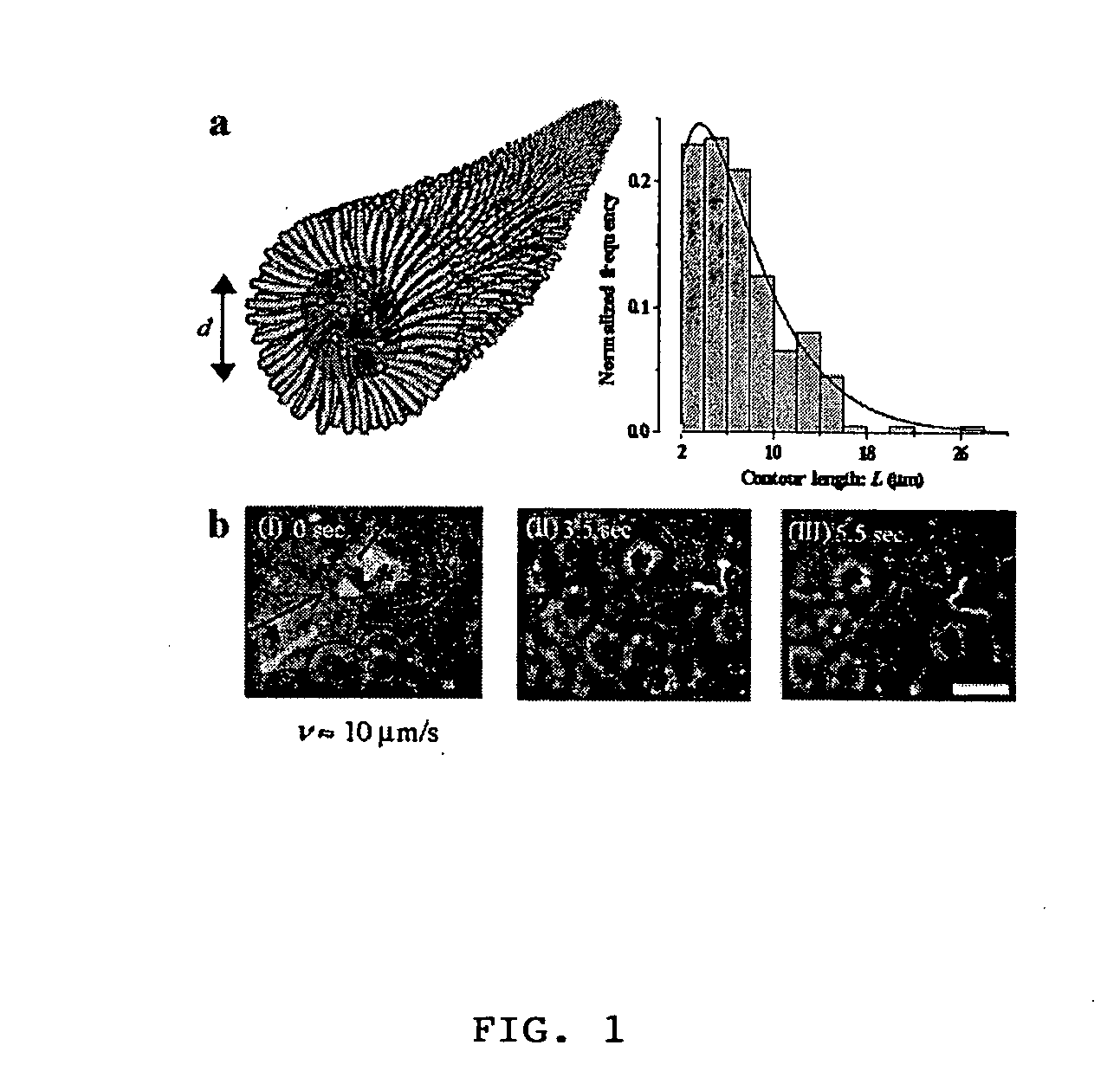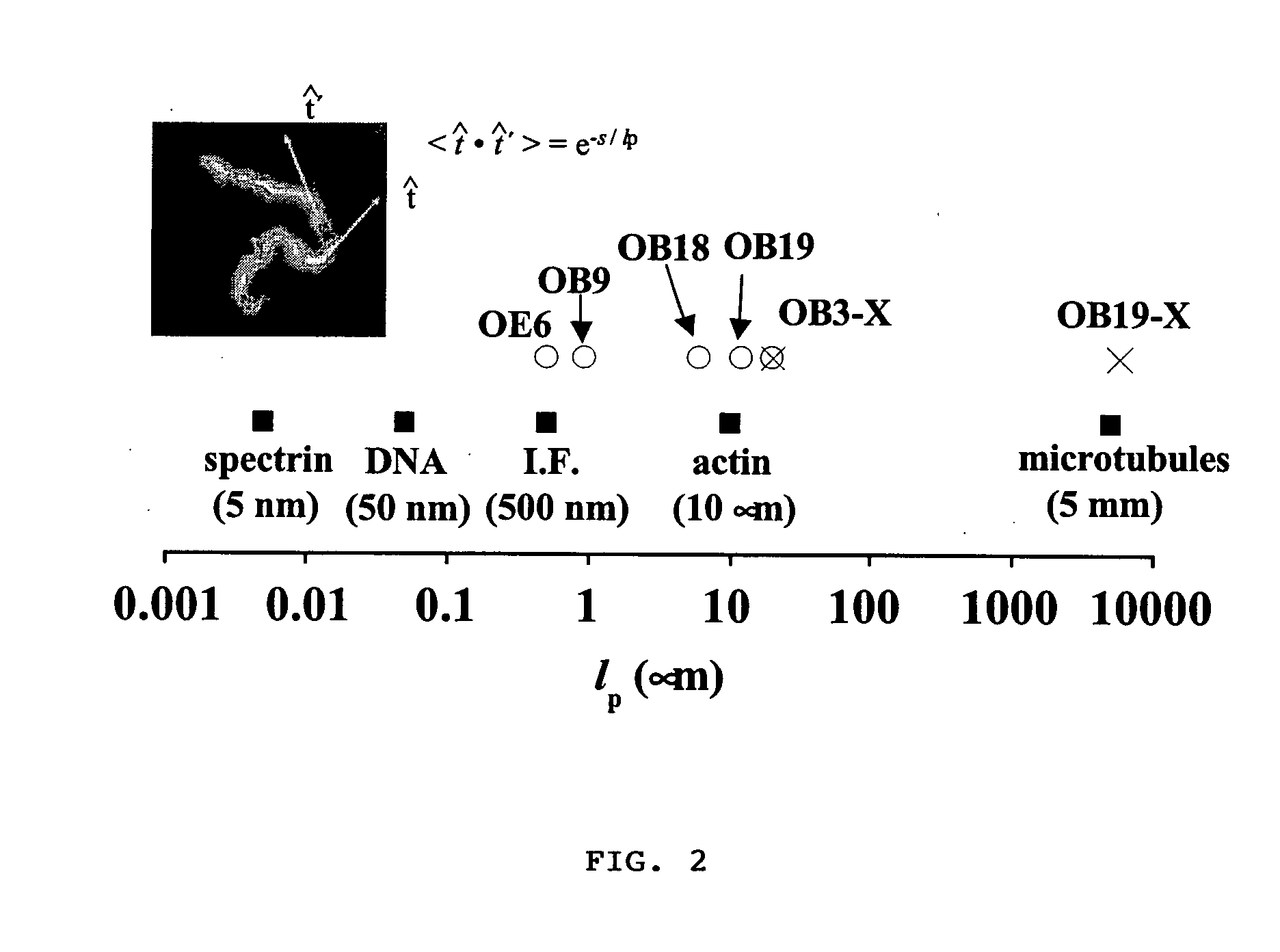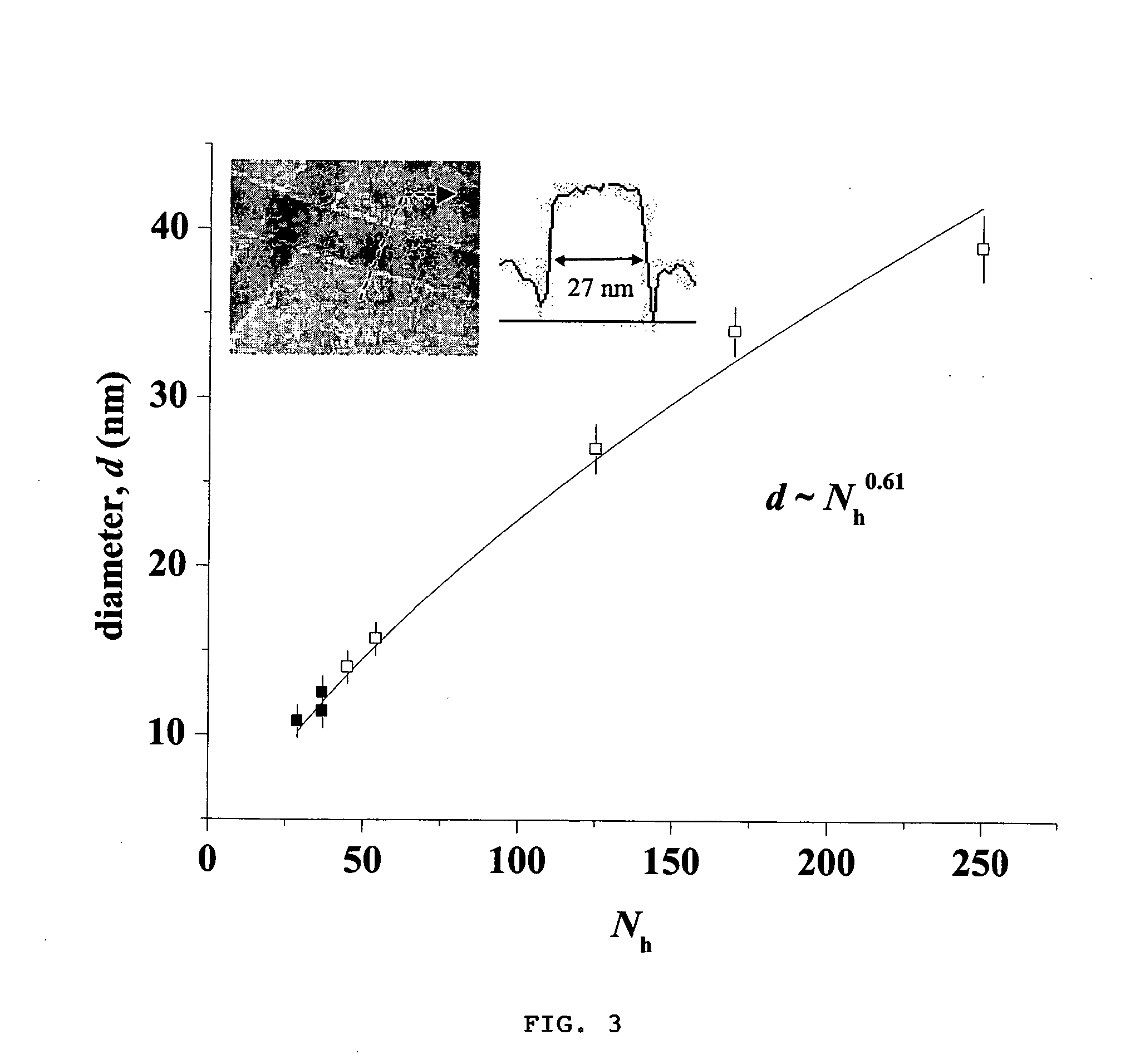Block co-polymer worm micelles and methods of use therefor
a technology of worm micelles and co-polymers, which is applied in the direction of ultrasonic/sonic/infrasonic diagnostics, peptide/protein ingredients, drug compositions, etc., can solve the problems of worm micelles that cannot survive injection as intact aggregates, worm micelles that are typical surfactant-based, and can not be easily re-injectioned as intact aggregates
- Summary
- Abstract
- Description
- Claims
- Application Information
AI Technical Summary
Benefits of technology
Problems solved by technology
Method used
Image
Examples
example 1
Visualization of Stable, Stiffness-Tunable, Flow-Conforming Worm Micelles
[0071] To visualize and characterize the formed and highly stable worm micelle superpolymers in aqueous solution, two worm-forming diblocks (structural details in Table 1) were examined—one with an inert hydrophobic block of PEE (polyethylethylene), designated OE6, and another with cross-linkable PBD (polybutadiene), designated OB3. The selected block copolymer amphiphiles have molecular weights (MW) that are 5-10 times that of typical lipids (Won et al., supra, 1999; Won et al., supra, 2001), which highlights the stability imparted by the blended copolymers.
[0072] To demonstrate control over worm shape and flexibility, the assemblies were labeled by adding fluorescent dye, which incorporates into the hydrophobic cores of the worms in a matter of seconds. Fluorescence video microscopy has, of course, been applied to study the dynamics of DNA (Maier et al., Phys. Rev. Lett. 82:1911 (1999), microtubules (Gittes...
example 2
Targeting and Delivery of Hydrophobic Drugs
[0093] In light of the stability, flexibility and convective responsiveness of the worm micelles shown in Example 1, the ability of the worms to target and deliver hydrophobic drugs to a host cell was studied using principles analogous to those used in viral delivery of DNA (Gref et al., supra, 1994). In vitro targeting and in vivo circulation assays were utilized to evaluate the functional capabilities (e.g., the ability to bind to cells and transfer encapsulated contents) of the worm micelles using biotin and a small ligand that binds to a receptor that is generally upregulated on tumor cells. Biotinylated macromolecules have been previously shown to undergo receptor-mediated endocytosis both in animal and plant cells (Photos et al., supra, 2003; Pasqualini et al., supra, 1996).
[0094] Hydroxyl ends of PEG-PEE block copolymers were made amine-reactive using p-nitrophenylcarbonyl (NPCF) modification chemistry (Lasic et al., supra, 1996). ...
example 3
Synthetic Vehicles for Drug Delivery
[0106] Many factors are involved in the circulation time of a foreign object through the vasculature, however, the role of vehicle shape and stability in clearance has remained indefinite. To answer that question, the following experiments were designed to confirm that the micron length, flexible, worm micelles of the present invention, have a significantly longer circulation time than previously utilized delivery vehicles, and to demonstrate their ability to load and transport a hydrophobic encapsulated material (i.e., drug) to a specific cell receptor.
[0107] In vivo circulation. To take advantage of their unique flow properties, flexible, micron-length cylindrical worm micelles were prepared as described above in Example 1 from two ˜5000 MW worm-forming PEG-based copolymers—OEX and OB3 (see, Table 1). Blends of these two copolymers formed cylindrical worm micelles with diameters of ˜10 nm and average contour lengths, L, of ˜10 um. The persiste...
PUM
| Property | Measurement | Unit |
|---|---|---|
| Fraction | aaaaa | aaaaa |
| Length | aaaaa | aaaaa |
| Amphiphilic | aaaaa | aaaaa |
Abstract
Description
Claims
Application Information
 Login to View More
Login to View More - R&D
- Intellectual Property
- Life Sciences
- Materials
- Tech Scout
- Unparalleled Data Quality
- Higher Quality Content
- 60% Fewer Hallucinations
Browse by: Latest US Patents, China's latest patents, Technical Efficacy Thesaurus, Application Domain, Technology Topic, Popular Technical Reports.
© 2025 PatSnap. All rights reserved.Legal|Privacy policy|Modern Slavery Act Transparency Statement|Sitemap|About US| Contact US: help@patsnap.com



